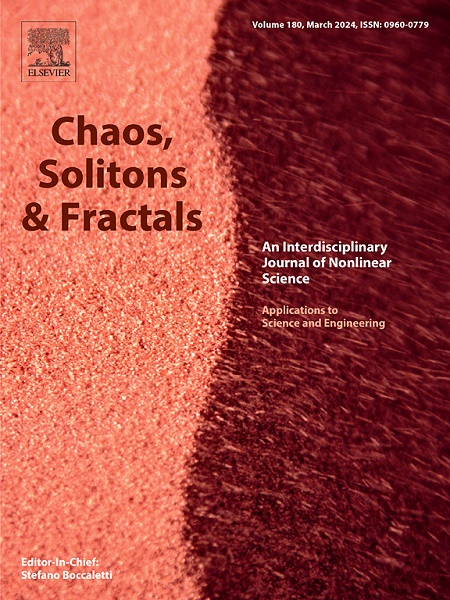传染性疾病的横向和环境传播:一个具有对数Ornstein-Uhlenbeck过程和非线性发病率的随机模型
IF 5.6
1区 数学
Q1 MATHEMATICS, INTERDISCIPLINARY APPLICATIONS
引用次数: 0
摘要
基于某些传染病传播途径的多样性和随机干扰的普遍性,提出了一种具有对数Ornstein-Uhlenbeck过程和非线性发病率的随机易感-感染-恢复-易感-环境(SIRSW)流行病模型。首先,我们给出了确定性模型的全局动力学。其次,讨论了该随机模型全局正解的存在唯一性,并给出了该疾病消除的充分条件。然后,通过构造合适的Lyapunov函数并应用Itô公式,得到了模型平稳分布的存在性。此外,通过求解Fokker-Planck方程,给出了准地方性平衡附近密度函数的具体形式。然后,通过数值模拟对主要理论结果进行了解释。最后,作为应用,我们的随机模型很好地拟合了埃塞俄比亚COVID-19数据,不仅验证了模型,确定了当地疾病传播的主要途径,而且为疾病的传播提供了合理的控制策略。本文章由计算机程序翻译,如有差异,请以英文原文为准。
Insights into infectious diseases with horizontal and environmental transmission: A stochastic model with logarithmic Ornstein–Uhlenbeck process and nonlinear incidence
A novel stochastic susceptible-infected-recovered-susceptible-environment (SIRSW) epidemic model with logarithmic Ornstein–Uhlenbeck process and nonlinear incidence rate is proposed based on the diversity of transmission routes of some infectious diseases and the prevalence of stochastic disturbances. We show, firstly, the global dynamics of the according deterministic model. Secondly, the existence and uniqueness of the global positive solution of the stochastic model is discussed and some sufficient conditions for the extinction of this disease are also obtained. And then, the existence of the stationary distribution of our model is obtained by constructing suitable Lyapunov function and applying the Itô’s formula. In addition, by solving the Fokker–Planck equation, the specific form of the density function near the quasi-endemic equilibrium is given. And then, the main theoretical results are explained by some numerical simulations. Finally, as an application, our stochastic model fits the Ethiopian COVID-19 data well, which not only validates the model and identifies the main pathways of local disease transmission, but also gives reasonable control strategies for the spread of the disease.
求助全文
通过发布文献求助,成功后即可免费获取论文全文。
去求助
来源期刊

Chaos Solitons & Fractals
物理-数学跨学科应用
CiteScore
13.20
自引率
10.30%
发文量
1087
审稿时长
9 months
期刊介绍:
Chaos, Solitons & Fractals strives to establish itself as a premier journal in the interdisciplinary realm of Nonlinear Science, Non-equilibrium, and Complex Phenomena. It welcomes submissions covering a broad spectrum of topics within this field, including dynamics, non-equilibrium processes in physics, chemistry, and geophysics, complex matter and networks, mathematical models, computational biology, applications to quantum and mesoscopic phenomena, fluctuations and random processes, self-organization, and social phenomena.
 求助内容:
求助内容: 应助结果提醒方式:
应助结果提醒方式:


